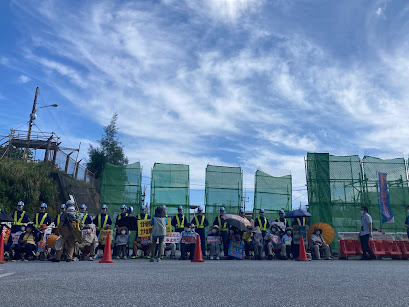OEJP and AOCHR's Joint Submission to U.N. Special Rapporteur on Toxics and Human Rights
On April 1, 2025, the Okinawa Environmental Justice Project and the Okinawa Human Rights Council jointly submitted a report, "U.S. Military's Central Training Area and Northern Training Area in Okinawa, Japan: Military Activities and Toxics," to Dr. Marcos A. Orellana, U.N. Special Rapporteur on Toxics and Human Rights. The Ginowan Churamizu kai and AOCHR also submitted two reports regarding PFASS issues in Okinawa. The submission was our response to the Special Rapporteur's "call for input on military activities and toxics."
Given the alarming state of war and peace around the world, a steadfast voice from Okinawa against war and militarization, as well as for the protection of human rights and the environment, and for peace, is needed more than ever before. OEJP is glad we teamed up with the AOCHR, one of Okinawa's leading civil society groups working with the U.N. Human Rights Council.
Our report was compiled based primarily on the documents from the Okinawa prefectural government and the U.S. military.
In the "Concluding Notes" section, however, we wrote:
"There is no doubt that the people of Okinawa and their environment have been exposed to toxic substances from the U.S. military's activities. However, as the people of Okinawa have limited access to information held by the U.S. military, most are unaware of the nature and extent of their exposure... To ensure their right to a healthy, safe, and sustainable environment, the people of Okinawa must have access to information in Japanese regarding military activities and their toxic impacts. Their efforts to seek such information must not be hindered or threatened."
Note:
Our report wrote, "Eighty percent of the buildings and structures on the island were destroyed, and the environment was devastated." We used this number based on our examination of various sources, including the U.S. military's records available on the internet and local municipalities' histories and reports. For example, the often quoted report, "The Impact of Invasion and Occupation on the Civilians of Okinawa" (1946) by Commander Henry Stanley Bennet states:
"An estimated 60 or 70 per cent of the buildings on Okinawa appear to have been destroyed or severely damaged as a direct result of operations. Those remaining intact or slightly damaged after the fighting have not been left undisturbed. A great number have been or are destined to be dozed over to make room for roads, airfields, or other installations."
We recognize that the number, 80%, needs to be further examined.
Here is our report.



